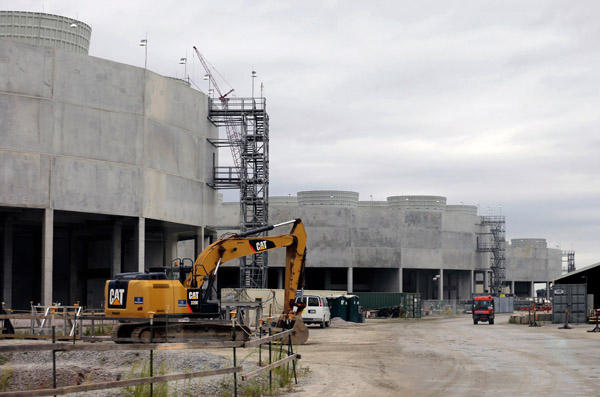Two South Carolina utilities are abandoning two unfinished nuclear reactors, half of the new reactors being built in the United States today. A decision on the other two will be made later this month. The South Carolina project is far behind schedule and far over projected costs, the recurring story of civilian nuclear reactor projects in the United States. China and Russia seem to be doing better with reactor-building, but their state-run companies can cook the books in ways that private companies can’t.
Nuclear power has been floundering for some time. Low prices for natural gas have undercut existing reactors, which are being closed. But nuclear looks like it should be a part of a future in which carbon dioxide emissions must be limited. Many people can be credited with its failure.
So congratulations to
The contractors who cannot build nuclear plants on time and within budget. Special mention for lowballing their bids and failing to meet quality control requirements.
The utilities that cannot contract or manage the building of nuclear plants.
The financiers who have botched their judgments of the projects.
Proponents of nuclear power. The strategy of competitive parading of one’s knowledge, parochial defense of a single system against all others, and unthinking opposition to wind and solar have been tremendous public relations successes.
Opponents of nuclear power. Spreading incorrect information and confusion instead of clearly delineating actual problems with nuclear power has made the public dumber.
Reporters who can’t be bothered to learn middle-school science.
The schools that didn’t teach it.
The Department of Energy and its predecessors. From a major misjudgment by a Rickover protégé through continuing confusion as to its role relative to the national laboratories and wildly varying support for nuclear energy, these agencies at best have been a neutral influence on commercializing nuclear energy.
Congress. Ever-increasing micromanagement of budgets, bending to lobbyists without a clear plan, and, since the mid-1990s, continuing resolutions rather than thought-out budgets make long-range plans impossible.
The national laboratories. Replacing their role as national resources for nuclear issues with a university model of individual investigators, but with more fighting over resources and overhead has diluted what they can contribute to the development of nuclear power.
Particular thanks to those who have assembled studies showing their favorite type of energy to be the most economically favored.
Good job, all! Your participation trophies are in the mail.
It’s possible that the new small modular reactor companies will be able to develop usable nuclear power, but it is an uphill battle.
More detail here and a somewhat mixed discussion here.
Photo: The V.C. Summer nuclear project near Jenkinsville, S.C.
Cross-posted at Balloon Juice.

Cheryl,
You didn’t mention the most important reason for the failure. The Nuclear Regulatory Commission whose ever changing and academic regulations continue to increase the cost and time required to construct a new plant or pirate an existing plant in the US.
LikeLike
Hello again Cheryl,
In my previous comment I meant to say ” …or operate an existing…”
LikeLike
This is a common complaint by the pro-nuclear people whose tactics I criticized in the post. Unless you can give specifics, it’s hard to see how this was “the most important reason.”
LikeLike
Whining about NRC regulations is the favorite pastime of nuclear proponents who don’t want to face up to the fact that the problems plaguing the civilian nuclear industry were apparent even before TMI and the supposedly out-of-control regulations. (How much regulation, exactly, is too much for these people? Maybe we should just trust utilities and contractors to look after public safety on their own nickel, since that’s worked out so well in the past….) The industry has been in full-on failure mode since at least the early ’70s, and probably before that, for a host of reasons that are part and parcel of the failed paradigm of large, central-station, on-site-construction-intensive, once-in-a-generation projects, though that last one begs the question of why even EdF and Areva, who have had the benefit of a sustained, multi-decade nuclear investment program in France and abroad and an exceedingly friendly regulatory and public financing environment, have nonetheless also failed to overcome the inherent flaws in the current paradigm. Russia and China are hardly the places to look for salvation – if we don’t actually know what a new reactor costs to complete in France (and we don’t), we have no bloody idea what it costs the Russians and Chinese, or perhaps more worryingly, what it would cost them were they to build their plants to anything resembling Western safety standards. The only salvation for the civilian nuclear power industry is to abandon a paradigm that has been luridly broken for decades and embrace as the only option going forward the SMR concept, with its unit size much more suited to the economics and physics of modern power systems and its promise of maximizing manufacturing economies. We are spending WAY too much time debating just how cold the corpse of the current nuclear industry actually is.
LikeLike
If you want a decent plant built on time and on budget, you go to the South Koreans. Pretty basic design but they have the expertise to get it done.
LikeLike